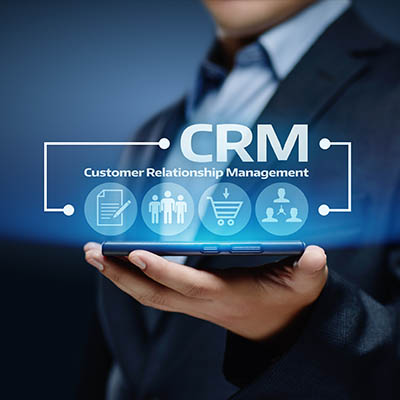A Beginner's Guide to Enterprise Software Development
Are you a budding software developer? Do you own a business that could benefit from enterprise software? Ever imagined yourself making a big profit in your software development gigs?
To the uninitiated and unfamiliar, software development can be such an intimidating pursuit—but that’s not entirely the case. Once you learn the principles of software development, everything will become smooth-sailing for you.
This page will primarily focus on what enterprise software is. By the end of this article, you’ll learn the essential things about enterprises software and how to create one. Read further as we talk about them in detail.
What is enterprise software development?

It can be defined as developing an application or platform that solves problems across a large organization. An enterprise software contains functionalities that work on reducing inefficiencies, streamlining communication within the company, and ultimately enhancing the lives of the employees. Depending on the nature of the organization, this software can serve so many more functions.
A large company or enterprise has very different needs compared to that of a small company. An enterprise software should cater to these specific needs. This is why thorough research is required in the development of software for an enterprise.
What are the three types of enterprise systems?
Large corporations have large network systems. They need software that can handle all their network data in an application with seamless corporate-wide functionalities. Development of software enterprise will depend entirely on the nature of the corporation.
These systems are capable of displaying, storing, and transferring complex data. In addition, they work to support or automate important processes that use this data. Large corporations, retail stores, pharmacy chains, and real estate agencies are some of the businesses that make use of large network systems.
Now, let’s take a look at the three main systems of an enterprise that needs management software.
- 1. Customer Relationship Management
- 2. Enterprise Resource Planning
- 3. Supply Chain Management
Keep reading to learn more about each one of them.
We build custom software with modern solutions in mind for any business and sizes!
We build custom software with modern solutions in mind for any business and sizes!
Customer Relationship Management
Simply known as CRM, it combines strategies, practices, and technologies that big companies use to easily manage and analyze customer interactions. The data is handled throughout the whole customer lifecycle. CRM is important in customer retention as it works to improve customer service relationships.
Small business and large corporations use CRM systems for the following main reasons:

- Collect and process client data to identify buyer trends and insights through real-time reporting and visualization features
- Help customer service representatives provide better and faster service with accessible customer information (past purchases, interaction history, etc.)
- Automate both sales funnel activities and customer support services
Some of its most basic functionalities include:
- Analytics
- Artificial intelligence
- Contact center automation
- Human resource management
- Integration with other software
- Lead management
- Marketing communication
- Salesforce automation
- Workflow automation
CRM systems work best for business processes involving customers. Its goal is to enhance the customer experience with custom software. Companies that spend a considerable amount of time cleaning up their existing client data for incomplete or duplicate records need software solutions like this.
CRM falls under a bigger enterprise software called ERP. Learn more about this in the next section.
Enterprise Resource Planning
- Accounting
- CRM
- Finance
- Human resources
- Inventory and order management
- Marketing
- Planning
- Purchasing inventory
- Sales
Companies use ERP systems for several benefits. Here are some of them:
- Collect information about the activity and state of different departments and make this available to the rest of the company
- Link information about a company’s internal process together. This typically includes distribution, finance, human resources, and production
- Eliminate duplicate and incompatible technology, which can be costly
With this enterprise application, every department has its systems optimized for department-exclusive tasks. They can communicate and share information more quickly with the rest of the organization. This software is essentially business intelligence in the form of shared data and integrated functions across different systems.
Supply Chain Management Systems

Enterprise software development also deals with supply chains. Popularly known for its acronym SCM, this enterprise software manages the flow of goods and services. This includes any process that transforms raw materials into final products.
Businesses use this enterprise software to:
- 1. Streamline supply-side activities
- 2. Maximize customer value
- 3. Gain a competitive advantage in the marketplace
- 4. Cut excess costs
- 5. Deliver products to the consumer faster
- 6. Keep them away from costly recalls and lawsuits
SCM software is important to keep business operations efficient and economical. With this, a company can keep track of the data and finances involved in product development. Its basic functions include:
- Procurement
- Product lifecycle management
- Inventory planning
- Enterprise assets and production lines maintenance
- Logistics (fleet management and transportation)
- Order management
- Global suppliers management
We build custom software with modern solutions in mind for any business and sizes!
We build custom software with modern solutions in mind for any business and sizes!
Developing Your Own Enterprise Software

to consider when developing software for enterprise.
Like every software-related project out there, you need to make a plan first. What’s your one true goal for this? Look at things from a bigger picture.
The last thing you want is to find yourself wasting your most valuable resources in this software development endeavor. It might help if you take small steps one at a time. Here are four best practices to consider when developing a software.
- 1. Start from one type of enterprise systems
- 2. Review the strong competitors
- 3. Design, develop, and deploy
- 4. Develop all three systems and collate into one
1. Start from one type of enterprise systems
Ask yourself the following questions:
- What business process area or unit requires systems integration?
- Are there company deficiencies to justify venturing into an enterprise software development project?
- Who will handle enterprise software, department coordination, and change management?
Of the above-mentioned enterprise systems, perhaps you only need CRM for your business. You can start with developing a mobile app. Mobile apps today make for a convenient customer service platform.
If you’re a developer helping out a client, make sure to learn about the nature of the company first. Practice R-E-A: research, evaluate, and assess. Your findings can make the development process easier.
2. Review the strong competitors
- How are your competitors doing it?
- Did they have IT infrastructure discussions prior to developing a software?
- Can you bring something unique to the table?
Study your target audience and your competitors so you can come up with something unique. Your software strategy should be nothing typical or ordinary. At best, it has to be configured for a specific business situation.
3. Design, develop, and deploy

- Can existing ERP software be upgraded?
- Is your development project going to be expensive in the long-run?
- Can your contemplated software options benefit the company?
Most development projects are either not well-planned or not well-executed. When designing and developing, make sure your plan is realistic and defensible.
Developing an enterprise software is a matter of finding the balance between software excellence and business value. Any misunderstanding of the business context can make things go down the wrong path. It pays to understand the whole context before starting on the actual enterprise software development.
4. Develop all three systems and collate into one
- Is it possible to combine the functionalities of ERP, CRM, & SCM in one application?
- Can an enterprise integrate its computer systems in custom software?
- What are the risks, costs, and benefits of this?
Mobile app for customer service, organization systems integration, sales management, supplies track-and-manage system, depending on the industry, it’s all possible with the help of a development company that employs the best practices and services.
We hope this article, all rights reserved, prepared you for your enterprise software development project.
Got any more questions about the three enterprise systems? Are you in need of expert assistance in building a custom system for your business?
Jerome Rault
Partner with a software development team one that's passionate about creating success
With the broadness of the internet, and it’s continuous expansions across different platforms it is hard to leave a mark that lasts. With digital marketing services, easily make a mark of your own that pulls customers in from different parts of the internet.
